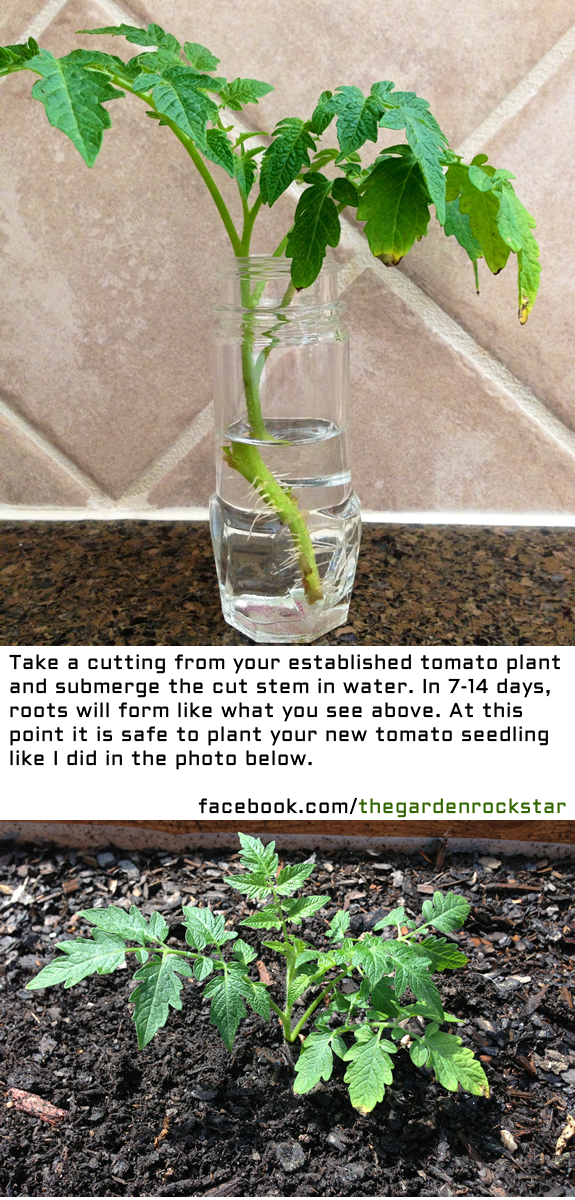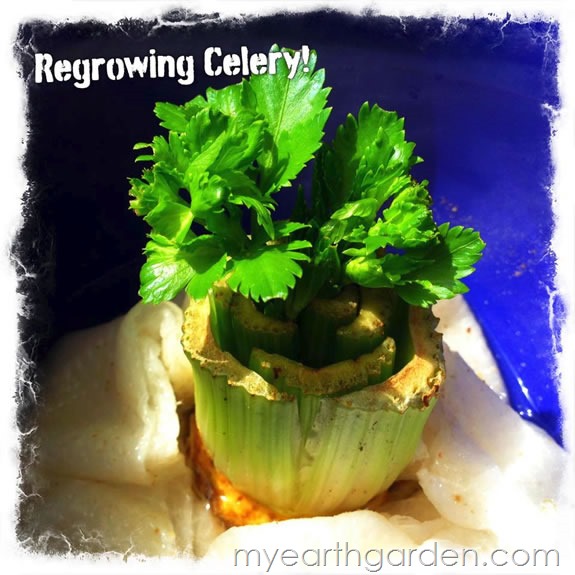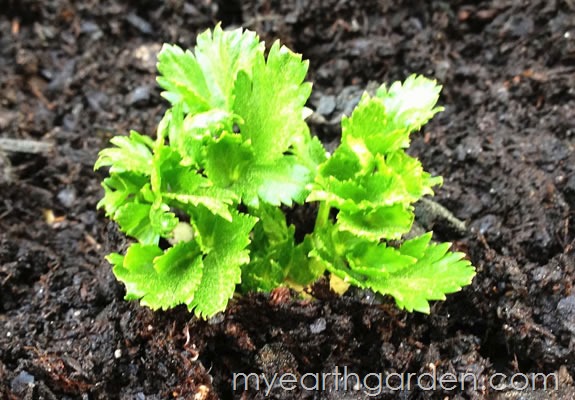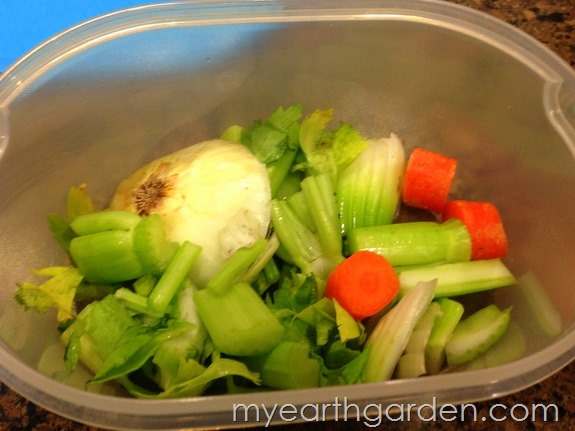
{ 1 comment }

Did you know that it is possible to grow celery from the root of the celery you buy at the grocery store? Here’s how:
Start with a stalk of organic celery that you have either grown yourself or purchased at the supermarket. Why organic? Celery is very high in water content, and it is one of the most likely to have pesticide residue when it is not grown organically.
Cut the root away from the celery ribs (the part you eat), leaving about 3/4” of celery intact. The photo above shows Day 1. The celery in the photo has just been cut and placed in a cup of water. A paper towel has been soaked in water and bunched up around the roots to keep them moist in the even that I forget to check the water level.
Place the cup in a sunny window and leave it alone.
At Day 5, you can already see new growth at the center of the stalk. Keep the root wet and let it do its thing. Mother Nature is pretty amazing to watch, and this is a great project to do with kids because the changes happen so quickly that they aren’t as likely to get bored with the process because they can literally see changes almost every day!
At Day 18, there will be a substantial number of leaves and new growth. The image at the top of this post is the same celery at Day 18. At any point after you see this level of growth it is safe to plant your regrowing celery in the garden, container, or raised bed outdoors. If you do so, be sure to keep a close watch on the moisture level of the soil to keep it damp at all times.

The photo above was taken at Day 31. The celery is now located in a raised bed in our new back patio garden and growing well.
This process can be repeated indefinitely. When the celery grows large enough to be used, the root can again be used to grow more celery. Stop buying celery and regrow your own already!
{ 0 comments }
Statistics show that as much as 40 percent of the food in the United States goes uneaten. 1 We are wasting food at twice the rate we did in the 1970’s while 1 in 6 people go hungry. 2
My waistline will attest to the fact that I am far from starving to death, but that doesn’t stop me from doing everything I can to curb food waste every chance I get. One way I do that is by making my own homemade vegetable stock at home. What’s more, I do it for free.

Every time I use fresh produce I have waste. Whether that waste is the ends of onions or carrots or the bits and pieces of celery that have gone soft after spending a day or two too long in the fridge, they all end up in my freezer stock container (see photo, above). In addition, frozen, or even canned produce and the liquids drained from them camp out in my freezer until I have amassed about 12 cups worth. That’s when I take stock and make stock.
From carrot peelings to onion butts, even wilted greens are fair game. When I cook the vegetable stock down, I usually do little more than add some fresh herbs (when they’re available), or dried herbs if that’s what I have. I bring the lot to the boil and reduce the heat to a simmer. I let the stock simmer for about 2 hours before cooling, straining, and canning it.
Alternatively, you can make your stock in smaller batches in a slow cooker by adding the vegetable waste, filling the slow cooker with water and allowing to cook on high for 6-8 hours. When you’re finished, the spent vegetables can be composted just as they would when they were raw.
Using this method I can produce 4 quarts of wonderful vegetable stock without spending anything at all, and I do the same for both chicken and beef, but that’s another post for another day!
{ 2 comments }
Watching Rick Warren’s Saddleback Civil Forum over the weekend where he asked some rather tough questions of Senator Barak Obama and Senator John McCain had be thinking about something that wasn’t even directly discussed. Perhaps it was the show I saw on The Weather Channel on Saturday that talked about the new sustainability curriculums that are sprouting up at colleges and universities that put the thought into my head, but regardless I decided that it was time I committed a few of my own ideas into word form.
I believe that from the earliest times of man we have had a responsibility to care for and maintain the earth that sustains us and to provide for ourselves and our families as well as those around us who are unable to provide for themselves. One of my biggest concerns about modern society is that we have lost touch with the earth in the most basic of ways. We no longer grow our own food, instead preferring the speed of store bought and often flavorless convenience foods. It isn’t only our wallets that suffer because of this, but our heath and well being.
I believe that if every person took the time to grow just one plant that produced something they ate, we as a society would learn to become more focused and centered. We would become less dependent on large scale growers who produce inferior quality produce and we would become more healthy. It starts at home and in my experience, people who taste home grown vegetables and fruit almost always immediately recognize the difference in flavor, color and texture even before they understand the difference in cost.
I believe that in order to reduce our dependence on fossil fuels include both foreign and domestic oil, we need to reeducate ourselves, forget a lot of what we have learned over the past few decades and return to the time-proven practices of past generations who cultivated the earth and grew their own crops because there was not other option. Their gardens fed their families, not the local fast food drive through window and the frozen food aisle. Eggs and poultry were raised at home and not kept in confining cages while being fed growth-encouraging hormones. Milk came from cows who stood in open fields chewing their cud all day that were all too happy to visit the barn and trade some of their milk for a trough full of feed.
I believe that consuming less – whether it be commercially produced food, gasoline, plastics or anything else – is the true beginning to a green revolution and that one day people will come to realize that sustainable living is not just a buzz word but something that begins at home.
Technorati Tags: sustainability green eco-friendly garden earth
If you enjoyed this post, please share it with your friends, link to it from your own web site and through StumbleUpon and DIGG.
{ 1 comment }